Local and Traditional Games Class 4 Notes Physical Education Chapter 5 Free PDF
| Table of contents |

|
| Introduction |

|
| Why Play Local and Traditional Games? |

|
| List of Games in the Chapter and Their Details: |

|
| Common Features in All Games |

|
Introduction
India has a diverse and rich culture, which is reflected in the games played across the country.
- In villages, towns, and cities, children participate in local games that have been passed down through generations.
- These traditional games bring together friends, families, and communities.
- They help build team spirit, improve physical strength, foster creativity, and teach respect for others.
- In this chapter, students will explore various exciting and meaningful games from different regions of India.
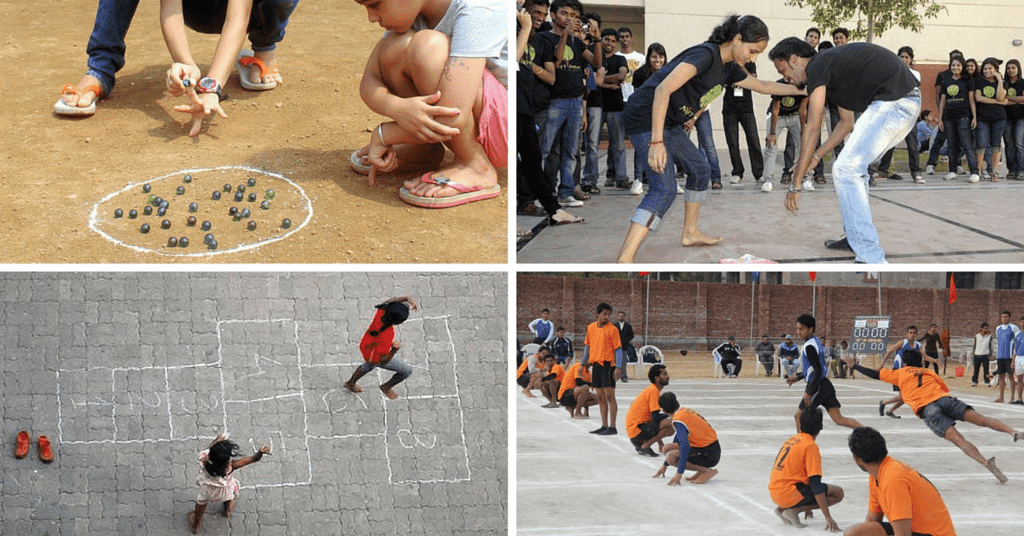 Traditional Games of India
Traditional Games of India
Why Play Local and Traditional Games?
Here are the reasons explaining why should we play local and traditional games.
- Physical Health: These games are great for keeping children active and healthy.
- Creativity: Playing these games encourages kids to think creatively and come up with new ideas.
- Social Bonding: Traditional games help strengthen bonds between friends and family members.
- Teamwork: Children learn the importance of working together as a team.
- Patience: These games teach kids to be patient and wait for their turn.
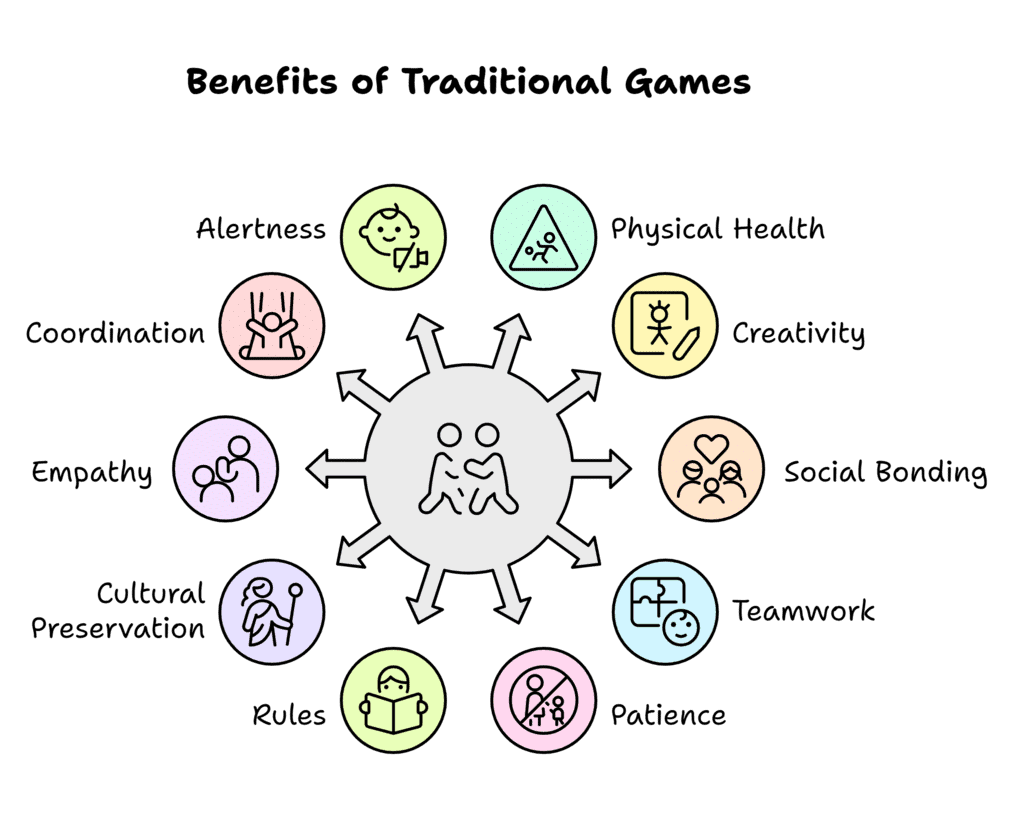
- Rules: Playing games helps children understand and follow rules.
- Cultural Preservation: Traditional games help keep Indian culture and stories alive.
- Empathy: Kids learn to understand and share the feelings of others.
- Coordination: These games improve hand-eye coordination and overall physical coordination.
- Alertness: Playing games keeps children alert and aware of their surroundings.
List of Games in the Chapter and Their Details:
1. Anti Pil (Marble Game)
This game is popular all over India, and in some places, it's called Gully Khela. The objective is to hit a marble into a hole called a pil, using a finger technique similar to shooting an arrow.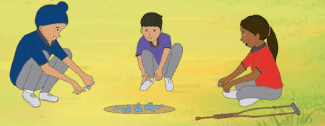 Anti Pil GameSkills Developed: Fine motor movements, concentration, accuracy.
Anti Pil GameSkills Developed: Fine motor movements, concentration, accuracy.
How to Play:
- Divide students into equal groups and create a round hole in the ground, known as a pil.
- Each player gets a marble and uses a finger technique, similar to a bow-and-arrow, to flick it towards the pil.
- Players aim to get their marbles into the hole and hit other players' marbles.
- The player who gets their marble into the hole first can hit other marbles. The last player remaining wins.
Safety Note: Play in a soft area to avoid injuries.
2. Majhya Mamcha Patra
This lively circle game involves a handkerchief and a bit of chasing. One player runs around the circle and discreetly drops a handkerchief, while the chosen player must chase and tag the runner before they escape.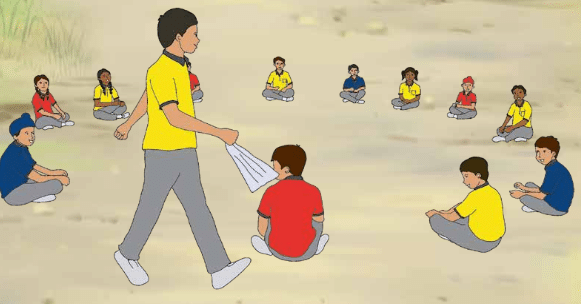 Majhya Mamcha PatraSkills Developed: Alertness, anticipation, quick thinking.
Majhya Mamcha PatraSkills Developed: Alertness, anticipation, quick thinking.
How to Play:
- Players form a circle, with one running outside and dropping a handkerchief secretly behind one student.
- The student must pick up the handkerchief and catch the runner before they escape.
- If caught, the runner becomes the "denner."
3. Indur Beral
In this exciting game, players form a circle where the mouse is protected by the circle, and the cat tries to catch the mouse. The objective is for the cat to enter the circle and catch the mouse, while the circle tries to protect it.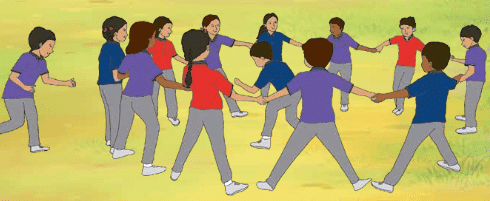 Indur BeralSkills Developed: Teamwork, protection, cooperation.
Indur BeralSkills Developed: Teamwork, protection, cooperation.
Objective: To foster teamwork, protection, and cooperation.
How to Play:
- Players form a circle, with the "mouse" inside and the "cat" outside.
- The cat attempts to enter the circle and catch the mouse while the circle protects it.
- If the cat successfully enters, the mouse has a chance to escape.
4. Tekeli Bhonga (Assam – Magh Bihu)
A traditional game from Assam where players are blindfolded and try to hit a ball with a stick, relying on teammates' guidance to navigate.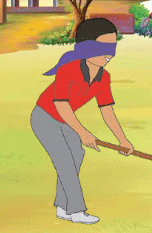 Tekeli BhongaSkills Developed: Trust, spatial awareness, empathy, communication.
Tekeli BhongaSkills Developed: Trust, spatial awareness, empathy, communication.
How to Play:
- Teams of four students play.
- One player is blindfolded, while teammates help guide them to hit a ball with a stick.
- Points are scored by hitting the ball within the given time.
5. Rinky Pinky Ponk What Colour You Want?
Rinky Pinky Ponk is a sensory game where players are asked to choose a color and run to find and touch that color before being caught. Variations of the game can include objects like stones or wood instead of colors.
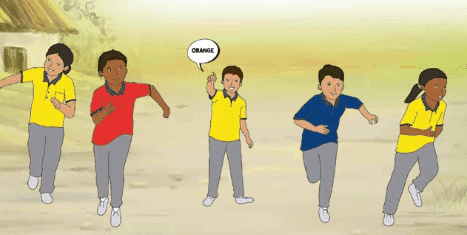 Rinky Pinky PonkSkills Developed: Quick decision-making, sensory sharpness.
Rinky Pinky PonkSkills Developed: Quick decision-making, sensory sharpness.
How to Play:
- Players choose a color and must run to find and touch the object of that color before being tagged.
- Variations can involve naming objects like stones or wood instead of colors.
6. Sundarikku Abhusuman Kuthal (South India)
In this game, players draw faces and decorate them with items like bindis while blindfolded, testing their spatial judgment and memory.
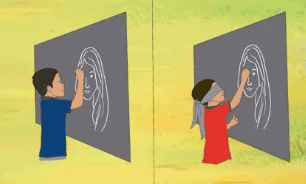 Sundarikku Abhusuman KuthalSkills Developed: Spatial judgment, memory, balance.
Sundarikku Abhusuman KuthalSkills Developed: Spatial judgment, memory, balance.
How to Play:
- Students form pairs and one student draws a face on the board while the other is blindfolded.
- The blindfolded player tries to place a bindi or nose ring in the correct position on the face.
7. Gaind Tora (Traditional Hockey-like Game)
A traditional Indian version of hockey where teams use bent sticks to hit a cloth ball and score goals by passing it through cones, improving coordination and striking skills.
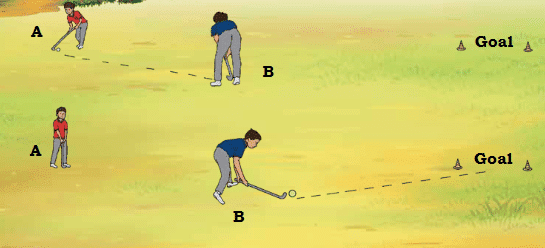 Gaind ToraSkills Developed: Coordination, striking skills, goal-setting.
Gaind ToraSkills Developed: Coordination, striking skills, goal-setting.
How to Play:
- Teams pass a cloth ball from one player to another, aiming to score goals by getting the ball through cones.
- The team with the most goals wins.
8. Chho Chho
Skills Developed: Strength, speed, controlled body movement.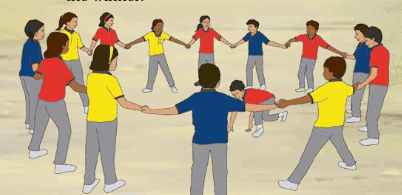 Chho Chho How to Play:
Chho Chho How to Play:
- Players form a circle and chant "Chho Chho" while the denner, a bear, tries to catch others.
- The denner performs a bear walk, while others dodge.
- If caught, the player becomes the denner.
9. Puchi Khela ( Odisha - Kumar Poornima )
Puchi Khela is a rhythmic game played to a song, where players squat and extend their legs in sync with the rhythm, promoting rhythm, endurance, and mental toughness.
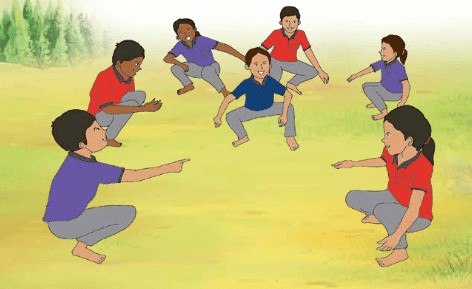 Puchi KhelaSkills Developed: Rhythm, endurance, mental strength.
Puchi KhelaSkills Developed: Rhythm, endurance, mental strength.
How to Play:
- Players squat in a circle, extending their legs to the rhythm of a song.
- Players who get tired exit the circle, and the last player remaining wins.
10. Silent Kabaddi
Silent Kabaddi is a variation of the traditional kabaddi game where players remain silent while trying to prevent the raider from laughing or smiling, developing emotional control and social sensitivity.
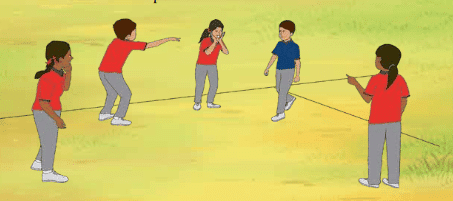 Silent KabaddiSkills Developed: Emotional control, social sensitivity.
Silent KabaddiSkills Developed: Emotional control, social sensitivity.
How to Play:
- Similar to regular Kabaddi but played without speaking.
- The raider tries to maintain a straight face while the opposing team attempts to make them smile or laugh.
- Points are scored by maintaining composure.
11. Dhop Khela
Dhop Khela is a throwing and catching game where teams take turns throwing a rubber ball into the opponent’s area, aiming to catch it before it hits below the waist, enhancing agility and throwing accuracy.
 Dhop KhelaSkills Developed: Agility, anticipation, throwing accuracy.
Dhop KhelaSkills Developed: Agility, anticipation, throwing accuracy.
How to Play:
- Teams throw a rubber ball into the opponent’s area, and the opposing team tries to catch it.
- If the ball is caught below the waist, the catcher switches sides.
12. Anding Oka
Anding Oka is a stick-pulling game played in pairs, where students hold and pull the stick without falling or letting go, building strength, grip, and encouraging fair competition.
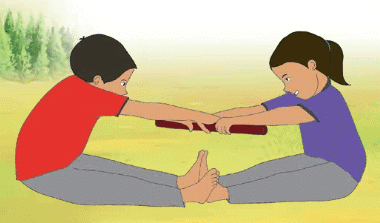 Anding Oka Skills Developed: Strength, grip, fair competition.
Anding Oka Skills Developed: Strength, grip, fair competition.
Objective: To improve strength, grip, and encourage fair competition.
How to Play:
- Players sit face-to-face and hold a stick directly above their feet.
- On the whistle, they pull the stick until one player falls or lets go. The last player holding the stick wins
13. Turai Kar
This traditional game, played in the Himalayan region, encourages teamwork and fosters love and compassion towards nature. "Turai Kar" means "do your best," and it promotes environmental awareness while also building physical skills.
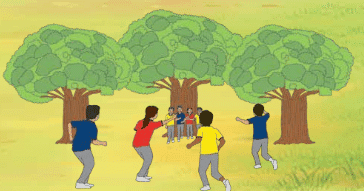 Turai KarSkills Developed: Teamwork, cooperation, environmental awareness, strategic thinking.
Turai KarSkills Developed: Teamwork, cooperation, environmental awareness, strategic thinking.
How to Play:
- Divide students into two teams: protectors and attackers, each with four members.
- The protector team forms a reverse circle by locking their elbows to shield the tree.
- The attackers try to touch the trunk of the tree, while the protectors continuously move in a circle and take side steps to block them.
- If an attacker touches any defender, that attacker is eliminated.
- If attackers succeed in touching the tree trunk, the roles are reversed.
Common Features in All Games
- These games use simple or no equipment at all.
- They promote Indian cultural values.
- The games encourage teamwork, empathy, and coordination among players.
- Playing these games strengthens the body, mind, and relationships between players.
|
20 docs|1 tests
|
FAQs on Local and Traditional Games Class 4 Notes Physical Education Chapter 5 Free PDF
| 1. What are some common features found in local and traditional games? |  |
| 2. How can classroom circle time activities incorporate local games? |  |
| 3. Why are local and traditional games important for children? |  |
| 4. Can you give examples of popular local games that can be played in schools? |  |
| 5. How do local games differ from modern sports? |  |




















